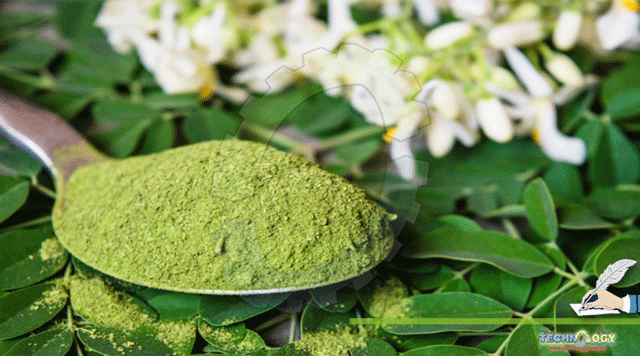Chickens are a significant and inexpensive source of animal protein in underdeveloped nations; hence poultry production plays a vital socio-economic role. The goal of contemporary poultry production methods is to achieve maximum profit at the lowest possible cost, and feed accounts for 60-70 percent of that cost.

By Dr. Rimsha Shahid, Dr. Faizan Ullah and Prof. Dr. Farzana Rizvi
In most developing nations, poultry production sectors face issues such as infectious diseases and rising feed costs due to the scarcity and high cost of the principal protein sources (soybean meal, fish meal, etc.), which are utilized to create poultry rations. Currently, illnesses, particularly infectious diseases, are on the rise and necessitate effective body defense systems to regulate them via immunomodulation. Malnutrition and infectious diseases have remained a major problem, particularly in poor countries, since they severely weaken the immune system responses of affected birds. Malnutrition is caused by an insufficient balanced nutritional intake, particularly of proteins, as well as diseases, which reinforce one another synergistically.
Moringa, often known as the drumstick tree, is native to South Asia, mostly in the Himalayan foothills of India, but it has also been planted and naturalized in Afghanistan, Nepal, Bangladesh, Sri Lanka, South and Central America. Its leaves are incredibly nutritious and rich in amino acids, vitamins, minerals, and natural antioxidants. It is short, simple to maintain, grows fast, and does not drop its leaves in the dry season.
Traditional folk medicine considers Moringa to be a valuable medicinal herb. It possesses numerous therapeutic properties such as antimicrobial, antiviral, immunomodulatory, analgesic, anti-inflammatory, antipyretic, anticancer, antioxidant, hepatoprotective, gastroprotective, anti-ulcer, anti-obesity, antiepileptic, anti-asthmatic, antidiabetic, anti-urolithiatic, diuretic, local anesthetic, anti-allergic, anthelmintic, wound healing, and antidiarrheal. Antiviral activity has been found in extracts obtained from moringa’s seeds, leaves, roots, and fruits against several RNA and DNA viruses. Many bioactive plant elements, such as phenolics and flavonoids found in leaves, have been shown to be effective antiviral agents. Using moringa in chicken diets provides several advantages, including the capacity to prevent illness and an enhanced nutritional value.
|
PARTS OF MORINGA |
MEDICINAL SIGNIFICANCE |
|
LEAVES |
Moringa leaves treat asthma, hyperglycemia, dyslipidemia, flu, heartburn, syphilis, malaria, pneumonia, diarrhea, headaches, scurvy, skin diseases, bronchitis, eyes, and ear infections. Also reduces, blood pressure and cholesterol and acts as anti-cancerous, antimicrobial, antioxidant, antidiabetic, anti-atherosclerotic, and neuroprotective agents. |
|
SEEDS |
Seeds of moringa help in treating hyperthyroidism, anti-herpes-simplex virus arthritis, rheumatism, gout, cramp, epilepsy, and sexually transmitted diseases. They can also act as antimicrobial and anti-inflammatory agents. |
|
ROOT BARK |
Root bark acts as a cardiac stimulant, antiulcer and anti-inflammatory agent |
|
FLOWER |
Moringa flowers act as hypocholesterolemic, antiarthritic agents and can cure urinary problems and colds. |
|
PODS |
Moringa pods can treat diarrhea, liver and spleen problems, and joint pain. |
Moringa leaves or Moringa leaf powder is not consumed freely by chickens. However, around half of the protein content of the leaves may be isolated as a concentrate and can be added to poultry feed. According to research, adding phytase to break down phytate, which leads to higher phosphorus absorption, may boost the nutritional value of Moringa leaves for hens. Broiler diets containing 7.5% moringa leaf meal had a substantial influence on broiler growth and carcass production, according to the researchers, and the inclusion of the two levels of moringa leaf powder in broiler rations has the potential to boost broiler growth and carcass yield. Throughout the production phase, moringa leaf supplementation improves broiler chicken productivity, intestinal integrity, digestive organ size, digestibility, bone strength, bone ash content, and meat output. In contrast to previous research, it is found that adding moringa leaf powder to broiler diets had no effect on feed intake, body weight gain, feed conversion ratio, final weight, feed cost per kg of broiler produced, or revenue overfeed and chick cost. Researchers discovered that increasing the amount of moringa in the feed reduced broiler development performance.
However, according to research that investigated the effects of moringa leaf meal as a soybean meal alternative on broiler growth performance, adding 25% moringa leaf meal as a protein supplement to broiler diets encouraged higher growth than commercial diets. According to research, Moringa may be used to partly replace fish meal. Aside from broiler research, there have been several investigations on the impact of Moringa on the performance of laying hens. Moringa leaf meal may be safely incorporated up to 10% in cassava-based layer diets without compromising production. Similarly, Moringa leaf meal was shown to be acceptable in laying hen feeds up to 10% -15% in several investigations. The methanolic leaf extract of Moringa can elicit both cell-mediated and humoral immune responses. Which could be related to the plant’s various macronutrients, micronutrients, and phytochemicals. As a result, the methanolic leaf extract of Moringa possesses potential therapeutic benefits in a variety of immunosuppressive clinical situations, which is why it is being used in local communities to treat a variety of diseases.
CONCLUSION
In different research trials, it has been shown that moringa has immunomodulator potential and antiviral properties against many viruses, particularly the Newcastle disease virus (NDV). Furthermore, moringa has been shown in studies to be able to partly replace costly protein sources such as soybean meal, sunflower seed cake, and fish meal. However, since moringa includes high bio-availability protein, it must be used with caution in poultry diets. Moringa leaf meal may be utilized safely at levels ranging from 5% to 20% in broiler diets and up to 10% in layer diets without causing performance issues.
Authors:
Dr. Rimsha Shahid, Dr. Faizan Ullah and Prof. Dr. Farzana Rizvi
Department of Pathology, Faculty of Veterinary Science, University of Agriculture, Faisalabad, 38000.